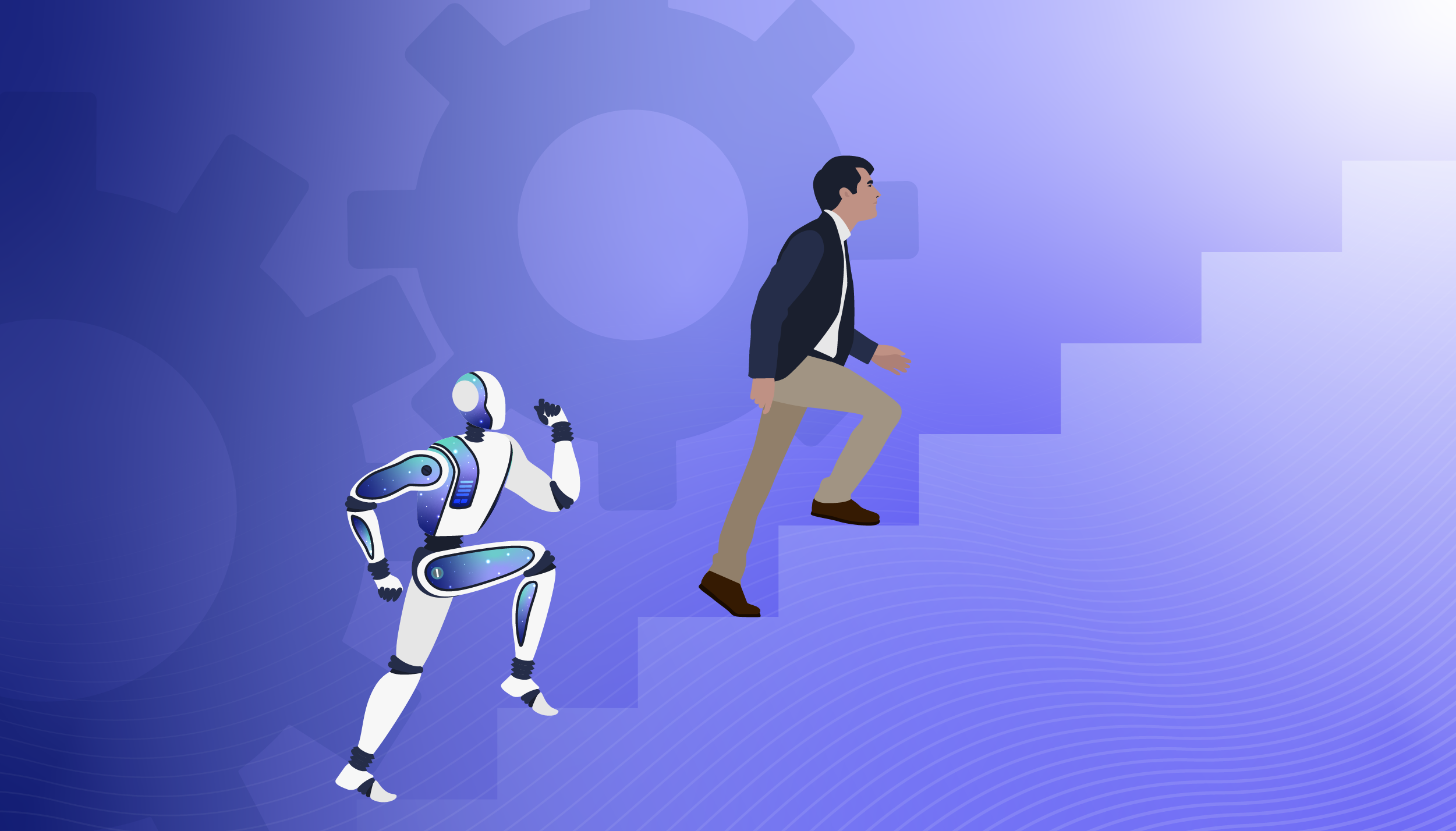From Reactive to Proactive: How the Smartest BPOs Use AI to Anticipate Customer Needs
If your support team feels like it's always in "catch-up" mode, you're not alone. Many organizations still measure success by how quickly they reply when a customer asks for help. But fast replies only solve half the problem.
What if you could anticipate needs before customers even noticed them? That's the promise of predictive CX. By pairing AI with operational expertise, companies can prevent issues, deliver reassurance, and show customers they're truly cared for. Research confirms this: businesses that anticipate and address needs early outperform peers in both growth and customer loyalty.
The Evolution of AI in Customer Service
The shift to proactive CX represents a fundamental evolution:
Generation 1: Knowledge-based chatbots that answered questions from scripts. Useful for basic queries, limited by inability to take action.
Generation 2: Autonomous AI agents that can execute actions across systems. This is where most "AI customer service" lives today: resolving issues end-to-end, but still waiting for customers to initiate contact.
Generation 3: Proactive agents that manage relationships over time. These don't just wait for customers, they actively work to ensure every interaction reaches resolution.
Siena's new Intelligent Follow-Ups capability marks the beginning of this third generation. For the first time, our AI doesn't just respond to customers, it detects when email conversations go silent, follows up at the right time with the right message, and closes the loop when customers never return.
How to Start Moving from Reactive to Predictive
Master the Basics: Intelligent Follow-Ups
Before jumping to complex predictive models, start with ensuring no conversation falls through the cracks. Consider this common scenario: a customer emails "Cancel my order," your AI responds "Which order number?" and then... silence.
With traditional AI, this conversation dies, cluttering your helpdesk. With Intelligent Follow-Ups, the AI detects the silence and follows up with a contextual message. This isn't just simple automation, it requires time-aware reasoning and persistent conversation state tracking.
Spot Anomalies Before They Become Spikes
Anomaly detection is about seeing trouble before it hits your inbox. Instead of waiting for dozens of customers to complain about a delayed shipment, your team can flag unusual patterns—like a surge in specific questions—early on.
The best place to begin is small. Choose one or two common frustrations, such as WISMO ("where's my order?") or password resets. Work with your team to identify the early signals, and then design simple proactive responses. For example, if you notice an uptick in shipping questions, send a proactive update to affected customers. Even modest interventions like these can save dozens of inbound tickets and build confidence that you're on top of the situation.
Use Usage-Pattern Analytics to Stay Ahead
Another powerful tool is usage analytics. By analyzing behavior patterns your team observes, you can predict when customers might need help, or when they might be at risk of leaving.
Look at your product logs or order history. Do repeat returns of the same item point to unclear sizing? Do multiple failed login attempts suggest your password reset flow is confusing? Your support team can surface these patterns by reviewing common ticket themes and repeated customer behaviors.
Once you've identified the patterns, design plays around them. If customers frequently ask about a specific product feature, don't wait for them to submit a ticket. Create proactive education or update your product pages. These interventions turn frustration into care, often saving both the relationship and the sale.
Redefine Human Roles
The heart of predictive CX isn't just automation, it's what humans do once freed from repetitive tasks. Instead of ticket closers, your team becomes advisors, investigators, and relationship-builders.
To start, audit your queue and mark which 20–30% of tickets could realistically be automated. With tools like Siena handling routine conversations and follow-ups, carve out what we call an "advisory lane." Dedicate part of your team's schedule—say, a half-day each week—to proactive work. In that time, they might review patterns in resolved tickets, improve product pages, or run outreach campaigns.
Upskilling is key. Advisors need training in root-cause analysis, cross-functional collaboration, and customer coaching. The shift doesn't have to be overwhelming. Begin with one or two people piloting this role. Measure the impact in tangible ways, such as fewer returns after updated copy or fewer cancellations after proactive education. Over time, scale the model across your team.
What It Looks Like in Action
We've already seen how this approach reshapes outcomes.
At Simple Modern, Siena automated nearly 80% of tickets while keeping CSAT at 98%. That gave their human team over 80 hours a week to focus on outreach and brand-building conversations.
Odeko, working with Boldr, saw First Response Time drop by 74% after restructuring their support model. With reactive pressure lifted, they were able to design VIP experience paths and launch proactive outreach programs that added value instead of just clearing tickets.
And at Urth, Boldr's restructuring stabilized chat and email response times to under 3 minutes for chat, under 3 hours for email. CSAT held steady at 90%. With a reliable foundation, the team could shift from firefighting to preventing repeat issues, improving both customer and agent experience.
Each case shows the same pattern: when AI takes on routine work—including proactive follow-ups—humans finally get space to do the kind of work that prevents issues and builds trust.
A Pilot You Can Try This Quarter
If you want to test predictive CX in your own environment, here's a 60–90 day pilot roadmap:
Baseline your metrics. Start with ticket mix, response times, CSAT, refunds, repeat purchase rates, and abandoned conversation rates. Define what "prevented" means. For instance, a follow-up that resolves an abandoned conversation or a proactive update that stops a WISMO ticket.
Implement Intelligent Follow-Ups. Start with email conversations. Let the AI detect when conversations go silent and follow up appropriately. This alone can resolve 20-30% of abandoned tickets.
Pick 2–3 signals. Focus on clear, high-volume areas such as shipping delays, login errors, or product confusion that your team has identified.
Launch proactive plays. Examples include sending an update if customers frequently ask about order status at the 48-hour mark, or updating a product page if repeat questions show customers are confused.
Redefine roles. Assign at least one team member to act as an advisor. Their job is to monitor patterns, fix root causes, and run prevention projects.
Measure outcomes. After six to nine weeks, review how many tickets were prevented, what upstream fixes were delivered, and whether satisfaction or retention improved.
This pilot doesn't require a full transformation. It simply proves you can move 10–20% of tickets from reactive to proactive.
Common Pitfalls to Avoid
It's tempting to focus on containment alone, after all, fewer tickets look good on paper. But containment without resolution leaves customers frustrated. True success comes from reducing tickets while ensuring customers still achieve their goals.
Another challenge is neglecting the human side. If your team isn't clear on their new advisory responsibilities, they'll slip back into old habits of reactive firefighting. Set expectations early, provide training, and reinforce that proactive work is just as valuable as reactive coverage.
Finally, don't try to scale too quickly. Predictive models are only as good as the data and patterns feeding them. Start with one or two signals, test, refine, and expand. Iteration—not big-bang launches—is what drives long-term results.
Where You Go from Here
The reactive era of customer service is ending. The proactive era is beginning.
Predictive CX isn't about replacing people with technology. It's about giving your team the space and intelligence to stay ahead of problems. Siena provides the intelligence and automation—including new capabilities like Intelligent Follow-Ups—to handle routine work and ensure no conversation falls through the cracks. Boldr brings the operational backbone and people power to identify patterns and act on insights. Together, we create a loop of prevention, care, and trust.
The journey from reactive to predictive doesn't happen overnight, but every step counts. Start small, measure outcomes, and expand with confidence. Your customers will feel the difference, and your team will, too.


